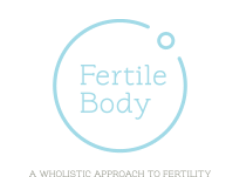Dysmenorrhea, or painful periods, is a common symptom of menses affecting more than 80% of all women, with more than half of all sufferers turning to pain medication for relief.
Depending on the severity of the condition, it can have a negative impact on your relationships, productivity, health and wellbeing. Yet many women simply continue to suffer miserably through their monthly cycles, putting it down to just a ‘normal’ part of being a woman. But that’s not necessarily true.
Let’s take a look at what causes cramps in the first place.
A woman’s uterus sheds its natural lining each month when the uterine muscle contracts. As it contracts, the blood vessels that supply the uterus become constricted, reducing blood flow, which results in pain. For some women, the hormonal changes that trigger menstruation may be more pronounced, causing the uterus to contract overzealously – and ultimately, more painfully.
The good news is that there are easy ways to reduce the pain without the need for oral pain medications. So if you’ve been putting up with painful periods for far too long, grab a cup of tea and a hot water bottle, get comfy and read on!
Reduce your sugar intake
Where there’s pain there’s inflammation, and sugar in our diets is a massive driver of chronic inflammation. Cutting down on sugar has the dual effect of alleviating period pain by reducing your body’s inflammation levels as well as helping you to lose weight, get clearer skin, have more energy….oh wait, that’s more than two positive side effects – nuff said!
Do child’s pose
In the week leading up to your period do around 5-10 minutes per day in ‘child’s’ pose. This gentle yoga pose helps release any tension in your lower back that can affect period pain as well as helping with blood flow to your uterus. It also helps to calm the nervous system…remembering that stress is also a driver of inflammation. Not sure how to do it? You can learn more about this pose and the powerful benefits of yoga at Yoga Basics.
Take a magnesium supplement
Many women don’t get enough magnesium in their diet and therefore need to supplement. Magnesium regulates nerve and muscle functioning and can help reduce the muscle spasms associated with period cramps.
Take a good quality fish oil supplement
As with Magnesium, many women are lacking ‘good’ oils in their diet and need to supplement to gain the powerful anti-inflammatory and blood thinning benefits of a good quality fish oil.
Apply heat
This is an oldie but a goodie! Get yourself a hot water bottle or a heat pack and apply it to your abdomen as needed. The heat will help relax the muscles and improve blood flow to the area, reducing the severity of cramps.
It’s important to also note that period pain is the main symptom for the majority of endometriosis sufferers. This is a serious condition that affects up to one third of women struggling with infertility. Not all period pain is related to this condition, but if period pain is part of your monthly cycle then it’s a good idea to visit an experienced practitioner for a full assessment and treatment if required.
Traditional Chinese Medicine has been used for centuries to treat painful periods. From a Chinese Medicine perspective, period pain is related to ‘stagnation’, or ‘stuck’ energy or blood. Acupuncture has an anti-inflammatory action, and as such, treatment can help to relax the nervous system and relieve the muscle spasms.
A thorough diagnosis by a qualified Acupuncturist can identify the underlying causes of the pain and provide you with an individualised treatment plan aimed at treating the root cause of the problem – rather than simply masking the symptoms with pain medication.
If you are interested in seeing how acupuncture and Chinese herbs can help you, book in your Free 15 Minute Phone Consultation.


